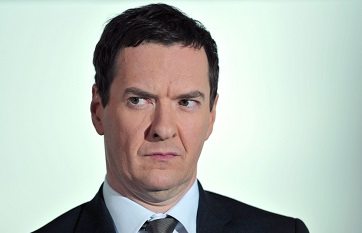|
There will be a sharp decline in the number of new homes developed and rents will increase as a result of the rise in stamp duty on buy-to-let landlords unveiled in the Autumn Statement, the Institute for Fiscal Studies (IFS) has warned. The government is introducing a 3% rise in stamp duty for buyers of second homes and buy-to-let landlords from April 2016, almost trebling the purchase tax on a typical £275,000 buy-to-let home from £3,750 to £10,800. Stephen Matthews, group sales director at Greene & Co., commented: “We’re expecting to see an influx of buy-to-let investors purchasing property in the early months of 2016 as they seek to get in the market before the 3% increase in Stamp Duty takes effect in March. This activity will likely push prices for one and two bedroom flats up in the short term but this will level out thereafter.” Should the buy-to-let market slow after April, as many analysts anticipate, it may enable more first-time buyers, squeezed out by investor-driven purchasers, to acquire property, but not if there is a notable fall in the rate of housebuilding.  Chancellor of Exchequer, George Osborne. Stuart Adams, a senior research economist at the IFS, estimates that tax rise could deter many housebuilders, with incentive to invest, slowing down the construction of new homes. Adams also predicts that the new tax measure could cause property prices to fall and push up rents, as many landlords pass on the additional cost to tenants. “Properties will be worth less because potential landlords and potential homeowners won’t be willing to pay as much for them,” he said. Adams added: “If property developers don’t feel they’re going to get as much for them, then there’s less incentive to develop it.” Despite the hike in stamp duty for landlords, along with government plans to slash tax relief for landlords, from 40-45% currently to 20%, and an intention to abolish the 10% Wear and Tear tax relief for furnished homes, buy-to-let still remains an attractive income investment at a time of low saving rates and stock market volatility. Average returns from but-to-let currently beat all other mainstream investments, including commercial property, UK government bonds, shares and cash, and that trend looks set to continue, on the back of soaring demand from tenants. “An oversupply of people and an undersupply of homes make buy-to-let an attractive proposition,” said Iain Hill of Equifax Touchstone, the market intelligence provider. Demand from renters is growing, while potentially fewer landlords coming into the market could reduce rental housing stock causing rents to rise further. Of course, being a landlord is not without its challenges. But with the latest HomeLet Rental Index showing that rents hit an all-time high of £1,560 per month in Q3 2015, up 7.5 per cent year-on-year, many investors continue to rent out their homes at a healthy profit. With attractive rental returns achievable and low-cost interest-only mortgages, otherwise deemed too risky for regular homebuyers, still available to landlords, buy-to-let continues to have plenty of momentum behind it that appeals to prospective investors. What’s more, landlords can still offset purchase costs, including a bigger stamp duty bill, against any eventual capital gains tax when selling up later on, assuming there is a profit. With more than 2 million landlords in Britain who own around 4.6 million residential properties collectively worth almost £1 trillion – a fifth of the country’s private housing wealth – it would appear that the buy-to-let market still offers room for growth |